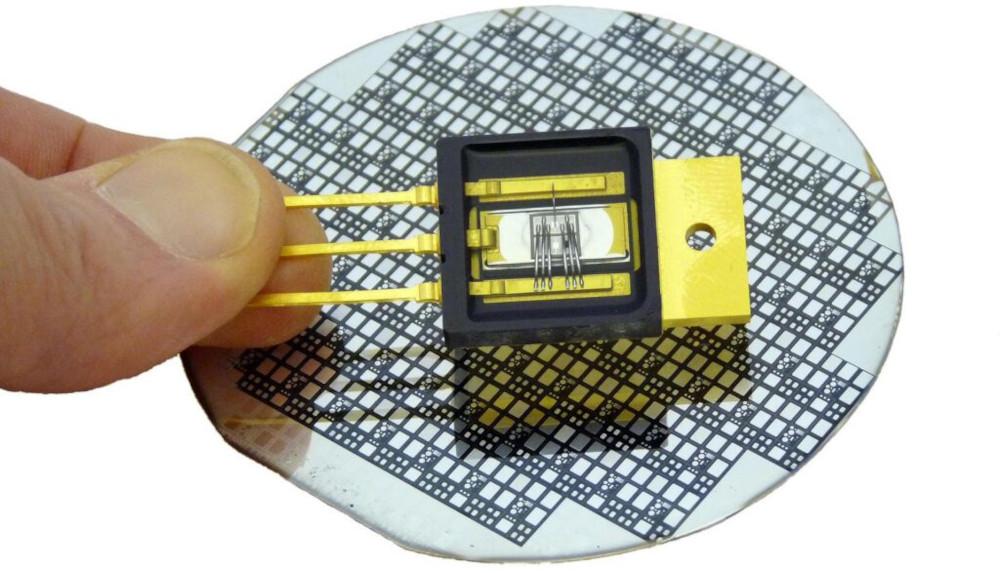Gallium Nitride (GaN) semiconductor devices are revolutionizing the electronics industry by delivering enhanced power efficiency, high-frequency performance, and compact form factors. As a wide bandgap semiconductor material, GaN offers superior electrical properties compared to traditional silicon, enabling devices to operate at higher voltages, frequencies, and temperatures with lower losses. These advantages have positioned GaN at the forefront of transformative technologies spanning electric vehicles, 5G communications, renewable energy, and data centers.
According to Straits Research, the global gallium nitride (GaN) semiconductor devices segment was valued at USD 3.19 billion in 2024. It is forecasted to grow from USD 3.91 billion in 2025 to reach USD 20.11 billion by 2033, expanding at a vigorous compound annual growth rate (CAGR) of 22.7% during 2025–2033. This robust growth reflects accelerating adoption across diverse industries driven by rising demand for energy-efficient, high-performance components.
Technological Breakthroughs Driving GaN Adoption
GaN devices leverage the material’s wide bandgap (~3.4 eV), high electron mobility, and strong thermal conductivity to achieve exceptional power conversion capabilities. These devices allow higher switching frequencies, reducing component sizes and improving system efficiency while maintaining low on-resistance and high breakdown voltages.
A landmark advancement in 2024 by Infineon involved pioneering the world’s first 300 mm GaN power wafer, expanding manufacturing scale and driving cost reductions. Transitioning from 200 mm to 300 mm wafers enables more chips per wafer, enhancing production efficiency and establishing near cost parity with silicon power devices. This advancement utilizes existing silicon fab infrastructure, facilitating faster adoption and reliable supply chains.
Intel contributed by demonstrating high-performance GaN-on-TRSOI (trap-rich silicon-on-insulator) technology for enhancement-mode GaN MOSHEMTs (metal-oxide-semiconductor high electron mobility transistors). This technology reduces leakage, improves linearity, and enables advanced packaging options, making GaN devices increasingly suitable for next-generation high-frequency and power applications.
Market Leaders and Regional Developments
-
Infineon Technologies (Germany): Leading GaN innovator with broad portfolio including CoolGaN-based power transistors and the industry’s first 300 mm GaN wafers. Infineon’s products serve automotive, industrial, and renewable energy sectors.
-
Wolfspeed (USA): A pioneer in GaN-on-SiC substrates, focused on scaling GaN wafer production, increasing output for telecom and electric vehicle markets.
-
Qorvo (USA): Supplies GaN power amplifiers for high-frequency applications including 5G base stations and radar systems.
-
Rohm Semiconductor (Japan): Expands GaN chipsets focused on automotive and consumer electronics power management.
-
NXP Semiconductors (Netherlands): Developing GaN devices for RF and power electronics supporting automotive radar and communication infrastructure.
-
GaN Systems (Canada/USA): Offering off-the-shelf GaN power transistors and modules with a focus on data centers and industrial applications.
-
Sumitomo Electric (Japan): Innovates GaN-HEMT devices improving electron mobility and device reliability, supporting high-power telecom applications.
-
STMicroelectronics (Switzerland): Advancing GaN technology integrated with silicon solutions for hybrid architectures.
North America dominates GaN semiconductor development due to significant research investment and fab capacity. Europe leads adoption in automotive and industrial sectors. Asia-Pacific, led by Japan, China, and South Korea, is rapidly scaling GaN wafer fabrication and expanding application development, supported by government incentives.
Key Industry Trends and Growth Drivers
-
Electrification of Transport: GaN devices enable more efficient power conversion in electric vehicles (EVs), supporting faster charging and lighter powertrains, accelerating the transition to sustainable mobility.
-
5G and Beyond: GaN’s high-frequency performance is critical for power amplifiers in 5G base stations and emerging 6G infrastructure where energy efficiency and bandwidth matter.
-
Renewable Energy: GaN enhances inverter efficiency in solar and wind power systems, improving grid integration and energy yield.
-
Data Centers and AI: High-performance GaN transistors reduce server energy consumption and heat dissipation, critical for sustainable AI and cloud computing growth.
-
Advanced Packaging: Integration of GaN with silicon and silicon carbide optimizes performance and reduces cost, enabling hybrid solutions tailored to specific applications.
-
Robotics and Automation: Compact, efficient GaN power devices support robotics requiring lightweight, high-density power electronics.
-
Sustainability Focus: GaN’s energy efficiency reduces carbon footprints, aligning with global environmental priorities and regulatory mandates.
Latest Industry Updates and Announcements
-
Infineon announced in early 2025 its groundbreaking 300 mm GaN wafer technology starting mass production in Austria, enabling lower costs and higher volumes while expanding its CoolGaN product portfolio.
-
Intel demonstrated its GaN-on-TRSOI MOSHEMT innovation at the 2024 IEDM conference, highlighting enhanced performance for wireless communication and power conversion systems.
-
Wolfspeed ramped up 200 mm GaN-on-SiC wafer production facilities in the US, meeting escalating demand from telecom infrastructure and EV power electronics markets.
-
GaN Systems unveiled next-gen power modules targeting data center UPS (uninterruptible power supply) applications with improved thermal and switching efficiencies.
-
Sumitomo Electric’s research breakthrough detailed in mid-2025 demonstrated improved electron scattering mechanisms in GaN HEMTs, paving the way for higher reliability in telecom devices.
-
Rohm Semiconductor expanded its GaN portfolio with automotive-grade devices supporting radar and powertrain applications in electric and hybrid vehicles.
-
European data center operators increasingly deployed GaN-based power supplies to reduce operational energy costs and carbon emissions.
-
China’s leading semiconductor foundries accelerated GaN epitaxy and device production capabilities backed by government support targeting the renewable energy and 5G market.
Summary
Gallium Nitride (GaN) semiconductors are rapidly reshaping global electronics by delivering unmatched power efficiency, frequency response, and miniaturization capabilities. Recent manufacturing scale breakthroughs and advancing device architectures propel GaN adoption in automotive, telecom, renewable energy, and high-performance computing sectors. With leading global players investing aggressively and technological innovations addressing cost and scalability constraints, GaN devices are positioned as essential components for next-generation power and RF electronics.



